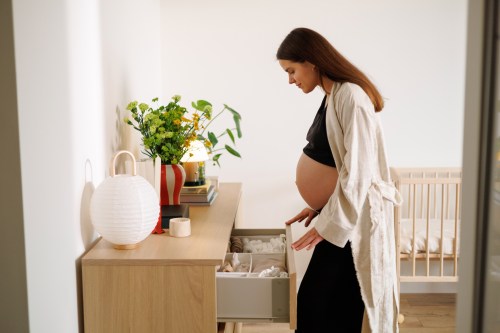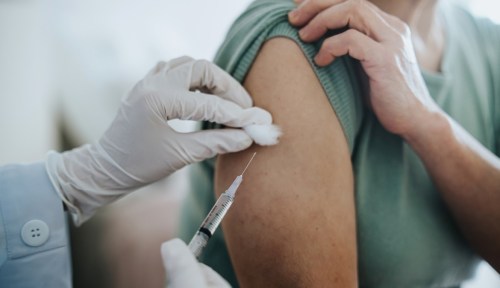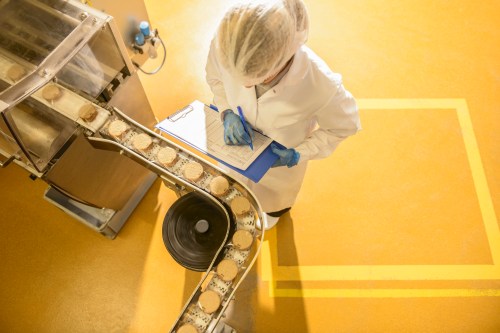Every month, an estimated 75 percent of people with uteruses experience premenstrual syndrome (better known as “PMS“): a combination of symptoms that appear about a week or two before their period. Depending on how it manifests in you, PMS can feel like a f-u-n combo of muscle soreness that reaches post-CrossFit levels, extreme exhaustion, and someone cheese-grating your insides. This je ne sais quoi sensation has come to be colloquially called “period flu”—and TBH, that can feel like a pretty accurate nickname when you’re in the thick of it.
Experts in This Article
Clara Paik, MD, is the director of gynecology at the University of California-Davis.
registered dietitian and author of The Better Period Food Solution.
“I believe most people are referring to PMS when they say ‘period flu,'” says Clara Paik, MD, director of gynecology at the University of California-Davis. Symptoms will usually occur during the luteal phase of a menstrual cycle, the time between when your body releases an egg (ovulates) and when your period begins. “Symptoms [of PMS] may include fatigue, feeling hot, muscle aches, nausea, constipation, diarrhea, cramping, headaches, appetite changes, food cravings, tender breasts, sleep disturbances, mood swings, irritability, or increase in depression symptoms or anxiety,” says Dr. Paik.
“I believe most people are referring to PMS when they say ‘period flu.'” —Clara Paik, MD
Luckily, Dr. Paik says the majority of people won’t experience all these symptoms every month. “Many women with PMS feel relief once they start bleeding or start their period, so [period flu is] kind of a misleading term,” says Dr. Paik. She adds that the majority of people with periods only experience one or two of the symptoms listed above, with very few experiencing Premenstrual Dysphoric Disorder (PMDD)—a more serious version of PMS that can manifest as irritability, depressed moods, mood swings, or anxiety.
While researchers don’t yet know the exact cause of PMS or “period flu”, many believe that the shifts in your hormone levels dictate how you’ll feel both mentally and physically during that luteal phase. That’s why everyone will experience PMS a little differently, while some people will never feel it—period. “Some women barely have any symptoms while some women suffer a great deal,” says Dr. Paik. “We don’t know why that is just yet. We think the hormone progesterone has something to do with PMS because after ovulation, there is a surge of progesterone and then it comes down right before your period starts. (This may also result in things like diarrhea during ovulation, too.)” Some research suggests that your genetics may also play a role in PMS, but again, this is all preliminary research.
As Dr. Paik mentioned, most period flu maladies will peace out the moment your period actually begins. Until then, those who are feeling constipated, bloated, or otherwise uncomfortable can try a little period-centric self-care. Below, Dr. Paik and Tracy Lockwood Beckerman, RD, host of Well+Good’s You Versus Food, offer tips for what you can do and eat to tackle PMS.
5 tips to follow when the period flu (aka, PMS) hits you like a ton of bricks
1. Use hot and cold therapy
Who hasn’t taken a steamy lavender bath in their luteal phase—am I right? Dr. Paik says that bringing on the heat can help your entire body (aching muscles, uterus, and all) so that you can kick back and read or watch Netflix. If you’re experiencing breast tenderness, she recommends using frozen peas or an ice bag instead. Just make sure you wrap the ice pack in a towel and leave it on your skin for no more than 30 minutes. Let’s not add frostbite to the list of PMS symptoms.
2. Sleep, sleep, sleep
For some, PMS and sleep problems go hand-in-hand. That’s why Dr. Paik says to really zero in on your shut-eye during your luteal phase. Get to bed early, spend plenty of time winding down, and make sure your bedroom is dark and cool for optimum sleep.
3. Eat foods that are high in magnesium and fiber
“Eating with your cycle in mind can help balance your hormones, ease the pain of cramps, regulate your cycle, and more,” says Beckerman in an episode of You Versus Food. “During the last seven to 10 days of your cycle—that’s before your period—get your magnesium in. It will help fight fatigue and it will also help squash pain associated with cramps. Magnesium is naturally found in foods like spinach, pumpkin seeds, and even dark chocolate,” she adds.
Beyond that, you’ll also want to make sure you’re eating plenty of fiber (about 25 grams per day). “Eat fiber-rich foods for constipation and bloating. Eat plenty of berries, dark leafy vegetables, and whole grains,” says Beckerman.
4. Drink water
“Hot tip: If you don’t drink enough water to flush all those fiber-rich foods through your gut, you may experience even more bloating and cramps. So keep your body going like a well-oiled machine and drink that H2O,” says Beckerman. For a snack that follows all these fiber rules, you could blend up berries, greens, oats, and water in a blender (along with your other go-to smoothie ingredients) and—there you have it—fiber without the farts.
5. Protect your mind from stress
In a perfect world, no one would be ~stressed~, like, ever. In PMS times, Dr. Paik says you’ll want to really go the extra mile to make sure you’re not piling on extra stressors at work or in your personal life. Instead, make sure you’re getting in activities that are like a massage for your mental health. For you, that could mean meditation, yoga, Zooming with a friend, running, bread-baking—you name it.
You should also stay on alert for symptoms that suggest you should see a doctor instead of drawing a hot bath or eating dark chocolate in bed. “You should see a doctor if your pelvic pain or cramping is moderate to severe during your periods and you do not find relief with Ibuprofen, if you have a true fever, weight loss, increased symptoms of depression or anxiety, or persistent pain with sex,” says Dr. Paik. Otherwise, this fake (but still annoying) flu shall pass.
Oh hi! You look like someone who loves free workouts, discounts for cult-fave wellness brands, and exclusive Well+Good content. Sign up for Well+, our online community of wellness insiders, and unlock your rewards instantly.
Sign Up for Our Daily Newsletter
Get all the latest in wellness, trends, food, fitness, beauty, and more delivered right to your inbox.
Got it, you've been added to our email list.










